“Women have always had to fight twice as much. Women have always had to carry two loads, one of which is private and the other public. Women are the backbone of society”. . – Rita Levi Montalcini
The list of women artists is really scarce. The history of art is subjective and incomplete. Many artists are absent from books and excluded from museums.
In this article, I want to introduce you to women artists in art history, to remember them correctly, in an attempt to make visible the invisible ones .
Let’s start with a look at history to understand the reason that has led women to emerge with difficulty.
Renaissance women artists
During the Renaissance Italy and Flanders were the centers of art. There was a division of roles: women had to remain in a domestic environment, while men belonged to the public sector. It wasn’t an equal game. It was a power game.
There have been many brave and artistically talented but little known women, including:
Sofonisba Anguissola (Cremona, 1532 – Palermo, 1625)
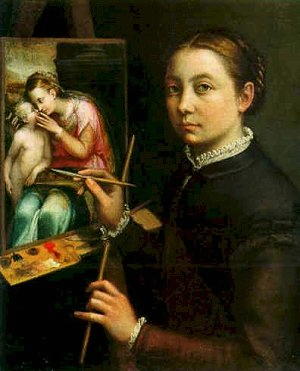
The first Italian painter to experience true international fame. Her father, an art lover and amateur draftsman, gave his daughters the opportunity to study literature, painting and music. However, Sofonisba was prevented from studying mathematics, perspective, and fresco technique.
Sofonisba stood out for her portraits. Sofonisba stood out for her portraits. In fact, the faces she drew are remarkably similar – “so well done that they appear to be alive”, wrote Vasari. She managed to make herself known in the Italian and European courts, beginning with the Spanish court, where she won the favor of the kings thanks to the portraits of Queen Elizabeth and Emperor Philip II.
Despite her long artistic career, Sofonisba was never paid in cash, unlike her male colleagues, but only with gifts, while the payments her father and brother received for her work are documented.
She was a painter as well known as Michelangelo and Titian . Unfortunately forgotten today, but her career encouraged other artists such as Artemisia Gentileschi (Rome, 1593 – Naples, 1656), the first woman inducted in 1616 to the prestigious Academy of Drawing in Florence.
Artemisia, daughter of the painter Orazio Gentileschi, was raped by her teacher Agostino Tassi and subjected to a trial in which her fingers were crushed to see if she was telling the truth. Gentileschi told her story through her works. The famous “Judith who beheads Holofernes” for some art historians represents Artemisia’s desire for revenge.
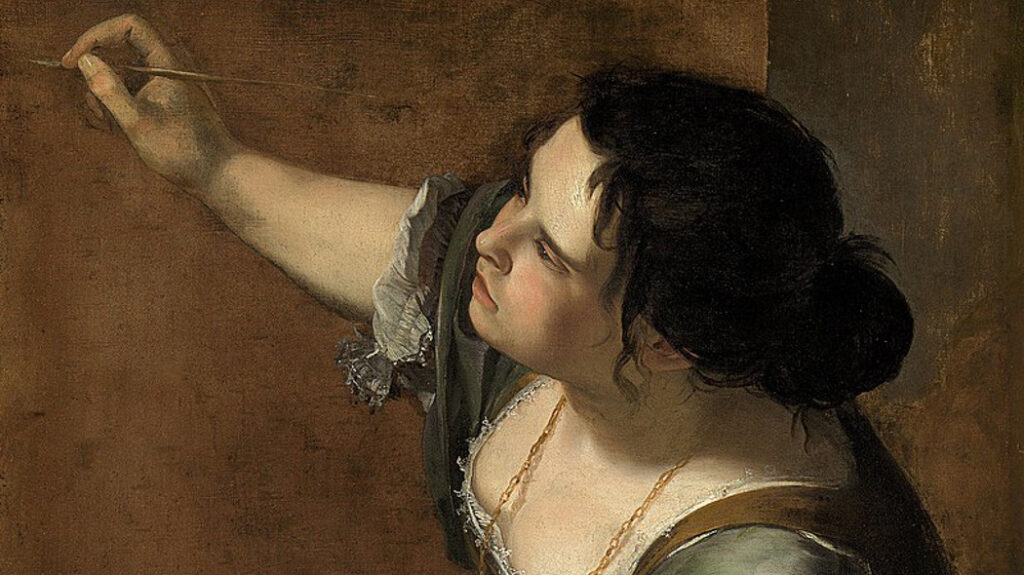
I think this painting represents her rebirth as an artist. It is impressive how Artemisia managed to make this work in the 17th century. In fact, women painters could not study anatomy. They could only represent still lifes, landscapes or flowers. Topics considered more in line with their moral integrity. Artemisia died in 1652 in oblivion and would only be rediscovered in the 20th century.
Rosalba Carriera (Venezia, 1675- 1757)
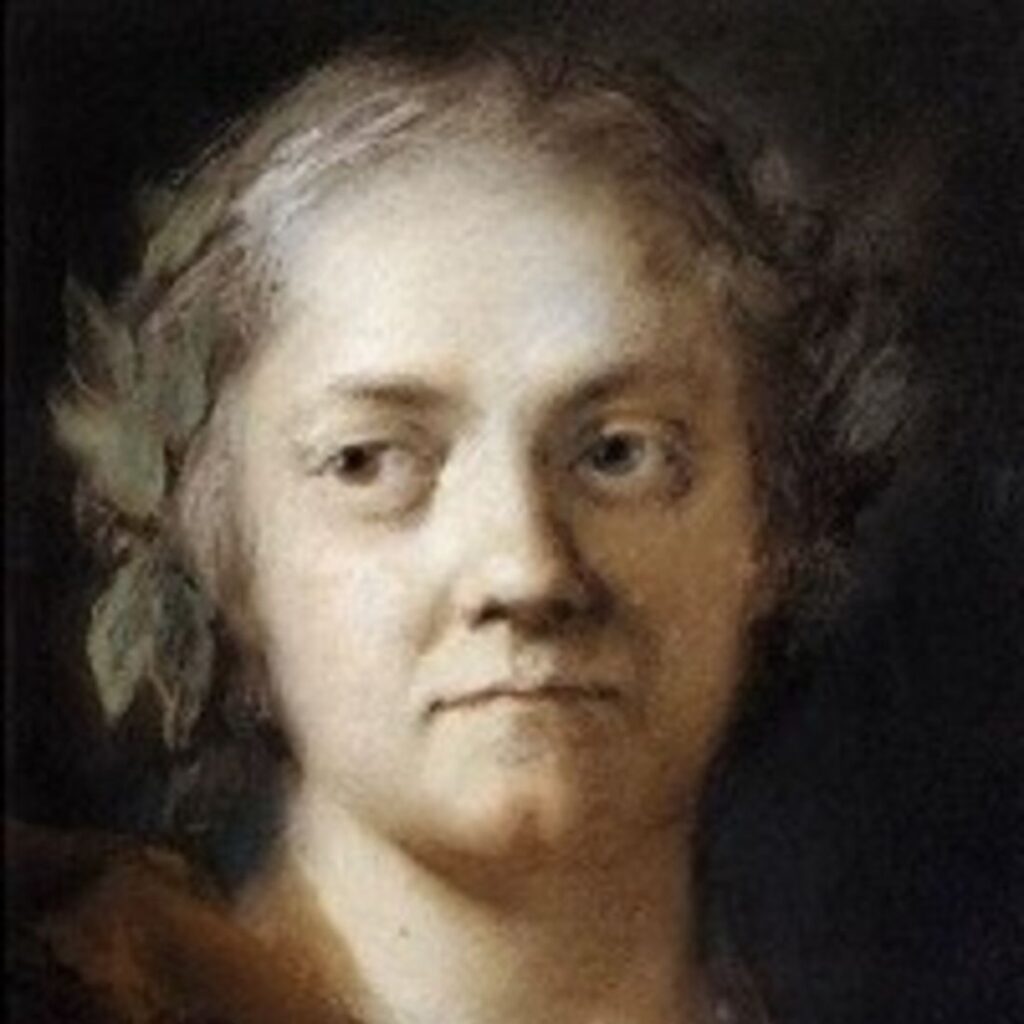
In 1648, the French monarchy founded the Academy of Painting and Sculpture where only 5 women were admitted, one of whom was Rosalba Carriera; famous for the introduction of the Pastel technique.
Thanks to her refined and soft-colored works, she won awards and commissions from princes and princesses, including the King of France Louis XV. She meticulously immortalized faces and expressions, as if she could read and understand the people she portrayed.
She portrayed herself from youth to old age, when due to a poorly accomplished corneal surgery, she totally lost her sight.
Angelika Kauffmann(Svizzera, Coira 1741 – Roma,1807)
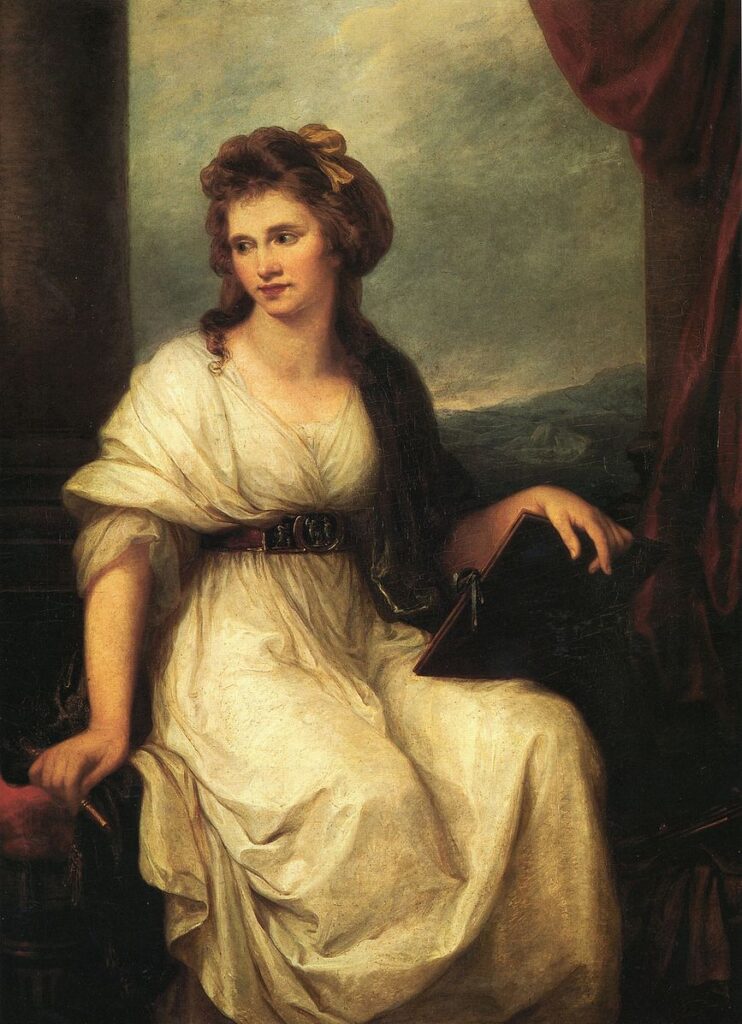
She is one of the most influential women of neoclassicism. Her father, the painter Joseph Johann Kauffmann, passed on to her the love for drawing.
She established herself as a portraitist, but she also showed an unusual interest in historical painting. Although the representation of nudes was a practice aimed exclusively at men, Angelika was not discouraged by the prohibitions and cleverly chose her objects to dispaly her talent, conquering the European courts with her art. This allowed her to join the artistic and literary elite of the time.
She became a founding member of the Royal Academy of Arts in London and was the only woman with Mary Moser to be admitted until the 20th century.
She died at the age of 66, on November 5, 1807, due to a chest pain probably caused by continuous exposure to poisons from the paddle, inhaled throughout her career.
Élisabeth Vigée Le Brun, the last painter of the old regime (Parigi, 1755 – Louveciennes, 1842)
Élisabeth-Louise Vigée Le Brun is considered one of the greatest portraitists of her time.

At the age of fourteen, after the death of her father, she decided to fully dedicate herself to the passion she had shared with him, quickly establishing herself as a professional painter despite her young age and earning a living painting portraits.
Elizabeth was accused of not being the author of her works, but of stealing them from her husband, Jean Baptiste Pierre Le Brun, one of the leading picture dealers of the time.
Familiarity with the court environment allowed her to access all the courts of Europe, as well as being admitted to the Royal Academy of Painting and Sculpture.
Adélaïde Labille-Guiard, , painter and revolutionary (Parigi, 1749-1801)

She was one of the protagonists of 18th century art alongside her historic rival Elisabeth Vigée Lebrun. Recognizing her artistic talent, the family entrusted her training to her neighbor, the painter François-Elie Vincent, who taught at the Accademia di San Luca and who was its first teacher.
After obtaining several awards for her talent, she continued to study and experiment with each technique, to be admitted to the Royal Academy of Painting and Sculpture. In fact, unlike their male colleagues, women had to publicly demonstrate their artistic abilities.
Due to the Revolution she moved to Italy for twelve years. Returning to her homeland after her long exile, she opened a literary salon in Paris where she died in 1842.
During her career she worked for the bourgeoisie and for the Court, becoming the official painter of the grandchildren of Louis XVI. She, in turn, was the teacher of many young students.
Two of them joined her in what is considered her most famous work “Self-portrait with the students Marie-Gabrielle Capet and Carreaux de Rosemond”.
During the French Revolution she sided with the revolutionaries and devoted herself to civil affairs, supporting the right of women to education and to be admitted to the Royal Academy without a limited number.
Era of exclusion of women in art
The French Revolution paradoxically marks the death of the emancipation of women and the presence of women in art. In fact, they were excluded from the conquests of the revolution and feminists were guillotined. Women did not obtain citizenship and were therefore no longer accepted into academies or art institutes, as well as deprived of the right to vote.
Some of them are:
Marie Guillemine Benoist,art as a manifesto of freedom (Paris, 1768- 1826)
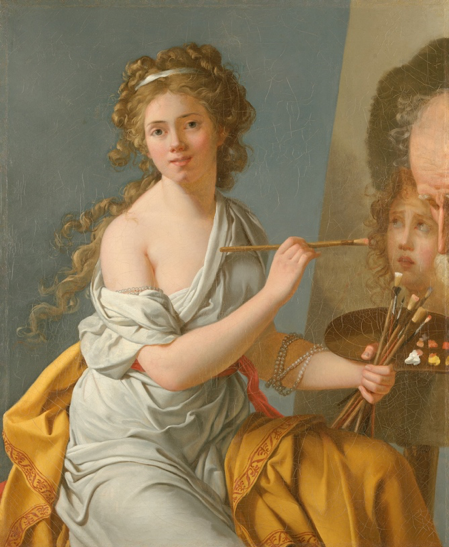
Marie Guillemine Benoist attended the studio of the French painter and politician Jacques-Louis David and it was thanks to him that she became an official painter of the Empire.
During her artistic career, she created technically virtuous and politically committed works. In a first stage that was characterized by the influence of her teacher, her painting embraced classical themes that she recovered from mythology and antiquity.
Later she devoted himself to other genres, obtaining considerable success. For example, the painting “Portrait of a black woman” established her fame as a painter and was exhibited at the Salon of 1800. She painted it six years after the abolition of slavery in France and is considered a manifesto of the emancipation of the people of color, in addition to reflecting the feminist beliefs of the artist. The work was not well received by critics and generated a scandal.
In 1804 she opened a studio reserved only for women. Unfortunately, after the Restoration she was forced to abandon art and her creative path.
Furthermore, once slavery was reestablished, Napoleon introduced the legal incapacity of women with the civil code of 1804, strongly influencing their artistic careers: putting power in the hands of her father, husband and brothers.
Era of scandals in feminine art
The Industrial Revolution of the 19th century represented the triumph of the bourgeoisie and the moralistic social codes. The predominant theme: creation for men; procreation for women.
In this period we find:
Marie Rosalie Bonheur (Bordeaux 1822, Thomery, 1899)
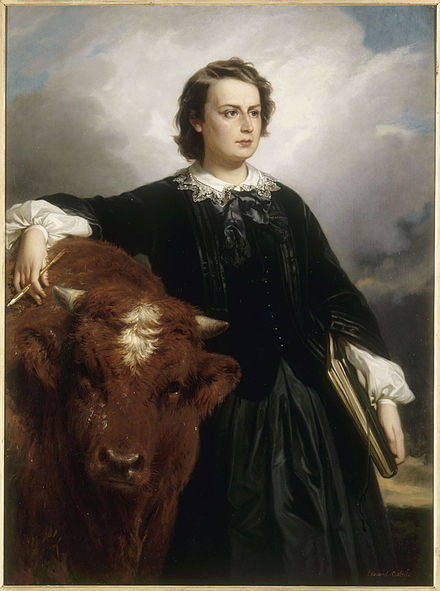
Her father was her only teacher, since at that time the Schools of Fine Arts in France were closed to women.
She was one of the most famous painters of her time, awarded the Legion of Honor, author of memorable portraits of horses and beasts, for her love of animals.
In addition, Rosa loved women and when she met Nathalie Micas at the age of fourteen, in 1837 they were never separated again.
To find inspiration, she toured the horse markets of Paris dressed as a man. In France, however, it was a crime for women to wear pants (from 1800 to 2011). Therefore, Rosa had to ask the police for a six-month license and repeatedly request the renewal.
In 1865, Bonheur became the first woman to receive the Grand Cross of the Legion of Honor.
Berthe Morisot(Bourges,1841 – Parigi, 1895)

Berthe Morisot was one of the few female exponents of the Impressionist movement.
However, her tombstone, in the Passy cemetery, near Paris, has only one inscription: “Berthe Morisot, widow of Eugène Manet.” Without reference to her career as an artist.
Berthe Morisot began painting at an early age, supported by her family (She was the granddaughter of the famous painter Jean-Honorè Fragonard). She was an artist in a world of male artists. In 1873, together with Monet, Pissarro, Sisley, Degas, Renoir, who portrayed her in the famous painting above, she founded the Impressionist movement, of which she was one of the few female exponents.
Morisot used to paint outdoors, absorbing sunlight and modulating it in its sudden changes, adopting a loose, spontaneous and almost improvised feature.
Painting outdoors, spending a lot of time outside home, was considered inappropriate and sensitive to attacks and prejudices. Thus, as an ironic response, the other half of Morisot’s production consists of domestic scenes. Elegant women portrayed at home or in the garden, sister portraits. The cradle, reading is one of the most famous works.
The state bought only one painting of his innumerable production and her death certificate says: no profession.
The 20th century is the era of possibilities for women in art
In the 20th century, the emancipation of women began.
The Union of Painters and Sculptors of Paris (1881) requested the admission of women to reserved classes in institutes and academies of art and the schools of Fine Arts in Paris opened their doors to women in 1900.
The school did not influence the career of women in art, because true artistic creation took place elsewhere. Women participate in all vanguard movements. Among the exponents are: Natalia Goncharova (1881-1962) Tamara de Lempicka (1898-1980), Sonia Terk Delaunay (1885-1979) Sophie Toverail, Giorgia O’Kleefe (1887-1986) and Anna Thöch (1889-1978) .
It took women 4 centuries to make their way into the art world, but there is still a long way to go to rediscover other forgotten artists and integrate them into art history books and museums.
The story is still incomplete. We need new methods of research on female artists.
I hope this article has contributed to bringing out and doing justice to female art.
If you like, write me your thoughts on the topic. I will be grateful to you for helping me enrich my content.
I will be grateful to you for helping me enrich my content.
For more information, you can also read “The role of women in art” ➡️
Keep reading my blog and follow me on my social channels Facebook, Instagram, Pinterest, Youtube
Sources: Sky Arte, Arte France, Francia, 2015
Photos: Wikipedia

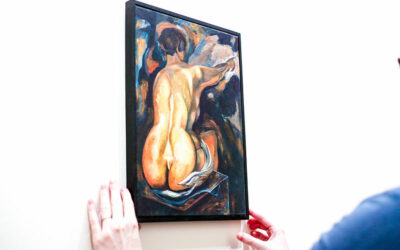
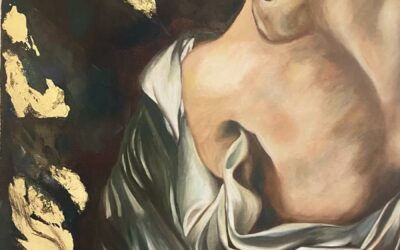
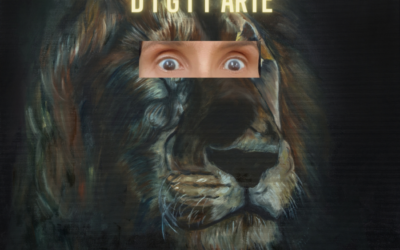
0 Comments